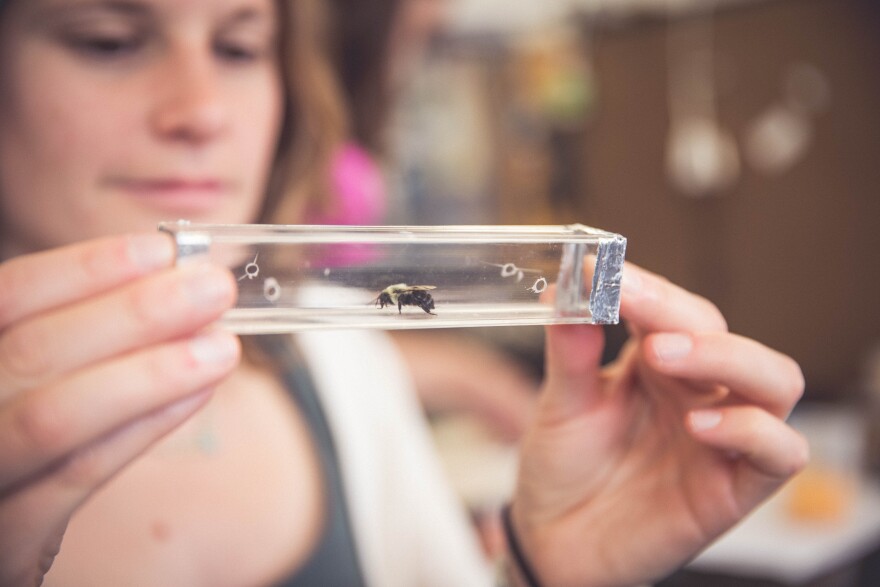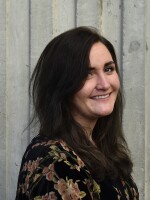Shelby Herbert: Thank you so much for being with us today. Could you speak a little bit as to why you thought it was important to write this book?
Felicity Muth: I think that in the media and in advertising, we often really fixate on the honeybee, and that’s because we use it in our agriculture, but having conversations with people when you're out and about, most people don’t know that the honeybee isn’t actually a native bee in America. It was introduced by European settlers, it’s now essentially a feral species in our environment. People who are really well-meaning will say, “I want to save the bees. I went and bought a load of honeybees," and actually, that’s kind of the last thing you want to do. It’s a bit like saying, “the birds are in decline, I went and bought a whole load of chickens,” right? This is a domesticated species that we use for agriculture — it’s not part of our native environment in North America. So, the drive for the book really came from just wanting people to know about all the other species.

Herbert: Tell me a little more about these other species.
Muth: There are 4,000 species of native bee in North America, and these bees are often ones that people wouldn't recognize as bees. They’re different colors; there are blue bees and green bees, and teeny, tiny bees that people would probably look at and think of flies, but these are all bees that are really important for pollinating our native wildflowers and [are] critical for our ecosystems.
Herbert: Which species are you working with right now?
Muth: We work with bumblebees, which are called primitively eusocial — so, they’re not as social as honeybees. They don’t have thousands of individuals in a colony, but they have hundreds of individuals in a colony; they’re still very much a social species. We work in the lab with one species, Bombus impatiens, which is a species that is used commonly in agriculture. It’s used for pollinating plants like tomatoes — which honeybees actually can’t pollinate. We also work with bumblebees in the field. I work at sites around Reno, Nevada, and out there we work with a bunch of different species, but one of the most common ones is the yellow-faced bumblebee, which is largely black with, as you might guess, a little yellow face.
Herbert: I had no idea farmers were intentionally using non-honeybees as pollinators — I thought that was just something we kind of expected out of our environment. Was that part of your inspiration to write this book?
Muth: The inspiration from the book really came from the fact that as scientists, we often get really into one particular topic, but then we often wonder what the bigger impact of our work is. I was in Reno, Nevada at the time working on pollen foraging behavior in bumblebees. I absolutely loved doing research there, and I loved my research, but I often would think, there’s all this work that I’m doing, and the general public will probably never know about the most important thing which is the fact that there are all these bees out there.
Herbert: Where were you when this idea came to you?
Muth: One night when I was thinking about this, I sat down and wrote the book in about an hour. The impetus behind it really was [that] I feel like if kids could grow up knowing about all these different bees, that's the first step towards protecting them.
Herbert: I’m blown away that you wrote this in an hour!
Muth: Well, then there was a lot of editing!
Herbert: Well, thank you so much for your time, Felicity. Any parting thoughts on your book, Am I Even a Bee?
Muth: I think that even though the original inspiration was to have children know more about native bees, the way that this story is told is really just a message of diversity and the importance of not always being the same — that it’s good to be different and that there’s many ways to be a bee.
Shelby Herbert is a KUNR contributor and graduate student at the Reynolds School of Journalism. This story was produced in partnership with the Mick Hitchcock, Ph.D., Project for Visualizing Science.
Am I Even a Bee? was written by Felicity Muth, illustrated by Alexa Lindauer, and published by Baobab Press in Reno, Nevada.
As a note of disclosure, Baobab Press is the publishing arm of Sundance Books and Music, a business sponsor of KUNR.






